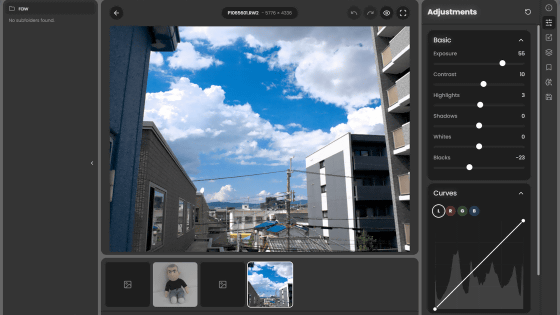We asked Canon, Sony, and others, 'Why do RAW image file formats vary from company to company?' and what was the result?

Different camera manufacturers, such as Canon, Nikon, Sony, Panasonic, etc., use different RAW image file formats. The Verge, an overseas media outlet, has published the results of asking each camera manufacturer why they use their own file formats.
We asked camera companies why their RAW formats are all different and confusing | The Verge
https://www.theverge.com/tech/640119/camera-raw-spec-format-explained-adobe-dng-canon-nikon-sony-fujifilm

Some digital cameras allow you to save the images you take as RAW images. RAW images can store more information than JPEG images, and you can flexibly adjust the brightness and sharpness of the image later. For this reason, they are popular among photo enthusiasts and professionals.
The following image files are RAW images taken with the Nikon D5 , Sony α1 II , and Panasonic LUMIX DC-GH7 cameras, respectively. The file formats are different for each camera: Nikon is NEF, Sony is ARW, and Panasonic is RW2.

Similarly, the file format for RAW images varies by manufacturer: Canon uses 'CR3,' Fujifilm uses 'RAF,' and OM SYSTEM (formerly Olympus) uses 'ORF.' We asked each camera manufacturer about the cause of this, and were successful in getting answers from Sony, Panasonic, Sigma, Canon, and Pentax. We also sent questions to Nikon and Fujifilm, but were unable to get a response.
The responses from each manufacturer are as follows:
Sony: Sony's α series uses its own proprietary ARW format to optimize device characteristics such as image sensors and image processing engines and maximize performance.
Panasonic: Proprietary formats allow for optimizations and support for unique camera features.
Sigma: By using our own data format, we can provide accurate camera information to the development software. However, this makes it less versatile.
Canon: By adopting its own RAW format, Canon can add its own information to RAW images without being bound by standardized specifications. It also allows the data to be handled freely, enabling optimal processing during development.
Pentax: The advantage of a proprietary format is that it allows for proprietary advancements. The disadvantage is that it may not be supported by third-party apps.
In order to improve the situation where RAW image file formats vary from company to company, a file format called ' DNG ' is becoming more popular. DNG is a file format developed by Adobe, and camera manufacturers such as Leica, Ricoh, and Pentax already produce cameras that can record DNG. In the past, Casio also produced cameras that support DNG . Apple and Google have also announced their support for DNG, and when shooting with ' Apple ProRAW ' on an iPhone camera, the shooting data is saved in DNG format.

Related Posts:







